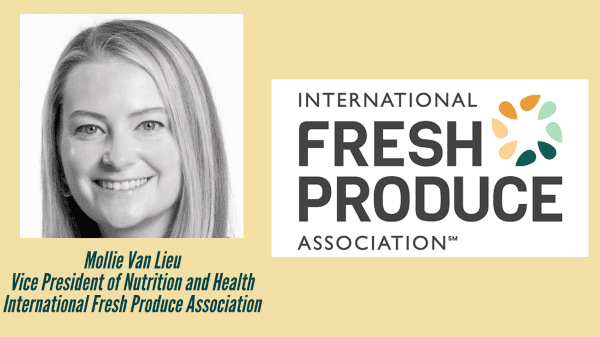When the White House Conference on Nutrition, Hunger and Health released a strategy in September 2022 (50 years after the last conference, no less!) to reduce diet-related disease by 2030, it included framework around Food is Medicine interventions.
In a world where nutrition-related marketing has left Americans confused and our country no healthier than it was decades ago, hearing an intervention like “Food as Medicine” can understandably fuel skepticism. Food as medicine: present and future – Produce Blue Book
Despite their short history, the reality is produce prescriptions (PRx) – while not yet widespread – are already here, rooted in evidence, and represent an opportunity to grow fruit and vegetable consumption in ways we have not fully capitalized on yet.
This is why the International Fresh Produce Association BB #:378962 made Produce Prescriptions a cornerstone of our White House recommendations and our nutrition policy advocacy efforts in the years ahead. IFPA’s Cathy Burns comments on Biden-Harris nutrition strategy – Produce Blue Book
So, what are Produce Prescriptions exactly?
It’s less about the food itself (we know fruits and vegetables are good for people and we know where they purchase them!) and more about the mechanism to scale what we know works.
Simply put, the “prescription” is a dollar amount exclusively for fruits and vegetables for patients that have – or are at risk for diet-related disease – and is financed by the healthcare system. Models can differ by community, but best practice has a patient receiving a pre-loaded card redeemable at the retailer of their choice.
For example, a Produce Prescription project in North Carolina has participants receiving $40 a month loaded onto a grocer’s loyalty card. Shoppers purchase the fruit and vegetables of their choice (so long as there’s no added sugar, fat, or salt).
Since the North Carolina program launched in late 2019, more than $7 million has been redeemed in produce and the data show that customers are redeeming twice that amount in combination with their own dollars.
For an intervention that hasn’t been around for but just a few years, Produce Prescriptions positively impact consumer healthwork.
A recent review of 11 Produce Prescription studies found significant improvement in weight/BMI, blood pressure, glycated hemoglobin (HbA1c), blood glucose, and/or blood lipid levels, even over the relatively short durations of many of these interventions, with impacts on diabetes management and glucose control (ie, HbA1c) consistently showing beneficial effects.
Today, more than 100 programs currently exist around the country, with states like North Carolina, California, and Massachusetts already with limited Medicaid-sponsored programs in place.
With the Center for Medicaid and Medicare services committing through the White House Conference to support pathways for expansion, more states are expected to test this work. Additionally, the Veterans’ Affairs (VA) and Indian Health Services (IHS), respectively, (two fully integrated federal healthcare systems) have committed to launching produce prescription pilots this year.
All these efforts are important in further building the evidence base to scale within the federal healthcare system (Medicare, Medicaid, VA, IHS, TRICARE, and the Children’s Health Care Insurance Program (CHI) cover 150 million Americans!).
What could this mean? When we overlay the percentage of Americans living with or at risk of diet-related disease and those who are food insecure, in Medicare alone we can approximate that up to 30 million individuals could be eligible for Produce Prescriptions.
Assuming a modest $40 per month produce prescription benefit per person, this could translate to $14.4B annually in fruits and vegetables just within Medicare.
But to see success, we must boldly drive forward advocating for policy and research that will result in embedding Produce Prescription benefit for all who qualify.
History shows the produce industry is no stranger to leading efforts in increasing consumption through federal policy. For example, school meals today are the healthiest food that most children receive, serving fruit and vegetable amounts and varieties consistent with the Dietary Guidelines for Americans.
The WIC program and its dedicated produce benefit has helped decrease obesity rates in toddlers.
But we have yet to crack the broader population.
Right now, only 1 in 10 Americans eat the recommended amounts of fruits and vegetables daily, 1 in 2 Americans are diabetic or prediabetic, 75% are overweight or obese, and the healthcare system spends 8 out of 10 of its dollars on preventable chronic disease. Diseases fruits and vegetables can help prevent.
Sure, Produce Rx is a somewhat new approach, but continuing to do what we’ve always done will not move the consumption needle.
By disregarding the healthcare system opportunity as a partner in improving consumption and dismissing the validation Produce Prescriptions received through the White House Conference strategy, we are also missing a once-in-a-lifetime opportunity to change the trajectory of health for our nation.
And that’s a side of history IFPA will not be on.



